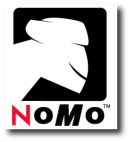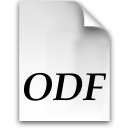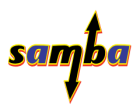11.19.13
Posted in News Roundup at 5:09 am by Dr. Roy Schestowitz
-
-
LaTeX is a typesetting system that gives you full control over how everything in your document is rendered. The problem is its really steep learning curve. One option is to use a basic text editor and learn all the markup you need for your document. The other option is to use an application that wraps the markup to some degree. LyX does this very nicely. While a fully WYSIWYG editor for LaTeX doesn’t make sense (since your doc isn’t fully rendered until sent to an output device), LyX does provide a pseudo-WYSIWYG interface where you can see how different regions will be rendered.
-
Key updates include:
• Background rendering/export support
• Curve effect added to FX Colour Correction effects
• Magnetic snapping enabled on all panels (can be turned off)
• Ruler added to timelines
• Right click functionality (Export, Add FX)
• Free users can now specify where media folders are located
• ‘Insert/Replace’ source option added
-
More than a year and a half ago, Google promised to bring its Google Drive to the Linux. Those who want to use the cloud-synchronized file system on the the open-source operating system, though, will have to keep on waiting.
In April 2012, when Google Drive launched, Google said, “The team is working on a sync client for Linux.” In May 2013, the update was, “The team is still working on it.” I asked for another update and got it Sunday: Google doesn’t “have anything new to share at this time in terms of timing.”
-
-
-
-
-
-
-
-
You can use GNOME Tweak Tool and Unity Tweak Tool to change your configuration options in Ubuntu 13.10.
-
-
-
-
Recently I’ve discovered this project that has great ambitions:
arkOS is an open-source platform for securely self-hosting your online life.
Everything started from the founder Jacob Cook and the CitizenWeb Project he founded. It’s designed to run on a Raspberry Pi – a super-low-cost single board computer – and ultimately will let users, even of the non-technical variety, run from within their homes email, social networking, storage and other services that are increasingly getting shunted out into the cloud, and so under the control of big companies.
Permalink
 Send this to a friend
Send this to a friend
Posted in News Roundup at 5:03 am by Dr. Roy Schestowitz
-
Valve has outlined a number of presentations that will taking place at their upcoming developer conference event, the inaugural Steam Dev Days, hosted in Seattle early next year. A session schedule includes presentations involving reps of AMD, Intel, Nvidia, Unity and Oculus, and of course a whole bunch hosted by the Valve Software team.
-
-
-
For the first time in the history of Linux gaming, we have the trifecta: video game engines, digital distribution, and finally hardware manufacturers all working together.
-
Pandora: First Contact is a science fiction 4X turn-based strategy game on a planetary scale – a spiritual successor to Sid Meier’s Alpha Centauri.
-
Originally due to start today the open beta for Nuclear Dawn the FPS/RTS game should hit in a few days!
We reported the game to you a few times (including with screenshots here) and it has hit multiple delays due to various issues over time, now though it looks to be hitting our platform in just a few days time.
-
A few days ago, in addition to the already existing Humble Bundle Sales and Weekly Sales, the Humble Bundle Store appeared on the market.
The Humble Bundle Store will assault with reduced prices, but in comparison to Humble Indie Bundles or Humble Weekly Sales, you can not pay what you want.
-
Nuclear Dawn the RTS/FPS hybrid is powering it’s way onto Linux with a possible open beta later this week!
-
Faster Than Light (more commonly known as FTL) is a top-down, real-time strategy game on Steam, made by indie team Subset Games. The player takes control of the crew in a space vessel that’s in possession of critical information that must be delivered to an allied fleet several sectors away. However, to make the game more challenging, you are pursued by a large rebel fleet in every sector.
-
Valve is fervently working on the new operating system and users can now trick the Steam client to think that is running under SteamOS.
Valve has started to integrate functionalities between Steam and SteamOS. In order to get a glimpse of that you will have to get the latest Beta.
-
Wow, there’s a nasty poke in the eye to Linux and Mac gamers. id Software seems to be regressing in its support of Linux. This is quite odd given what Valve is doing with SteamOS.
I guess Valve is just going to have to convince id Software that Linux is worth supporting. For the record, my money is on Valve. They know what they are doing, and I think the folks at id will do a quick turnabout when all is said and done.
-
-
-
-
Permalink
 Send this to a friend
Send this to a friend
11.18.13
Posted in News Roundup at 9:37 am by Dr. Roy Schestowitz
Recruitment
-
The foundation thinks that a natural way of promoting the participation of younger people in the Linux kernel development is to reach out to colleges and universities to host training activities where students and faculty learn the ropes of how to contribute to the kernel.
-
Version 3.13
-
There’s many exciting Linux 3.13 kernel features already, but we have another one to talk about today. In the input subsystem update for 3.13, support for the Neonode zForce has been added, an interesting touch-screen technology based on infrared light fields.
-
The Kernel-based Virtual Machine updates for the Linux 3.13 kernel were filed today and includes a fair amount of improvements for virtualization on PowerPC hardware, but there’s also some x86 improvements too.
-
While the merge window for the Linux 3.13 kernel isn’t even over yet, this next major kernel update is already looking to be rather exciting with a number of new features.
-
For those in need of a high-performance specially-optimized file-system for flash storage devices, the F2FS file-system developed at Samsung has seen more “major enhancements” queued up for the Linux 3.13 kernel.
-
The merge window hasn’t even officially opened yet on the Linux 3.13 kernel but it’s already super exciting and I can’t wait for the new code to start hitting mainline and to benchmark these massive changes to the Linux kernel. Here’s just a few things to expect so far but it’s already gearing up to be a super exciting release and perhaps the best of 2013.
More Development
-
AMD has just published a new set of Linux kernel patches, revealing Linux support for a Cryptographic Coprocessor (AMD CCP).
-
The btrfs-progs user-space component to the Btrfs file-system has seen a number of commits in recent weeks. Beyond lots of code improvements and bug-fixes, the default meta-data block size was changed for the Btrfs mkfs command.
Events
-
The 3.12 Linux kernel release this week brought with it many new features including multi-threaded RAID5 support in the MD subsystem, the addition of render nodes, and TSO sizing.
-
-
The Linux Foundation is preparing to host its third LinuxCon Europe and this year for the first time will also host CloudOpen in Europe. The combination of the two events along with a variety of other co-located events taking place next week represents the largest gathering of Linux and open cloud professionals in Europe. From KVM Forum & oVirt Workshop to Xen Project Developer Summit and Yocto Developer Day to the Open Compute Engineering Workshop, there is something for everyone.
-
Linux Foundation Training scholarship winner Abdelghani Ouchabane is a senior software developer at eZono, a medical device startup in Germany that uses Linux to build its software and systems. He’s worked on a range of Linux projects over the past five years in this job, including kernel module and driver configuration, system and server configuration, and networking, he said. He’s also contributed to many open source projects including Fedora, CentOS, Ubuntu, Meego, Tizen and Debian.
Graphics Stack
-
Yesterday there was news that OpenACC 2.0 parallel programming support was coming to GCC complete with GPU acceleration support for NVIDIA GPUs. While it was exciting on the surface, it appears that this work may be poisonous and could have a very tough time making it upstream.
The news yesterday was about Oak Ridge, Mentor Graphics, and NVIDIA working to add OpenACC 2.0 parallel programming support to the GCC compiler for C and Fortran. GCC right now doesn’t have any support for OpenACC, even the older versions of the specification, and the patches thus far haven’t fully exploited the GPU potential besides converting OpenACC to OpenCL or another implementation that just runs OpenACC over OpenMP on the CPU. Mentor Graphics is now responsible for bringing OpenACC 2.0 with NVIDIA GPU support to the GNU Compiler Collection.
-
The xf86-video-freedreno X.Org driver for providing support for Qualcomm’s Adreno/Snapdragon graphics hardware has reached version 1.0 in its first stable release.
-
After the support has been within Wayland’s Weston reference compositor for several months, developers have now added sub-surfaces support to the Wayland core protocol itself. Wayland sub-surfaces can make for efficient use of video players and windowed OpenGL games on Wayland.
-
-
Interesting in the Wayland camp this week has been lots of discussions about the XDG-Shell proposal but besides that, a patch-set just appeared that finally adds alt-tab support to Wayland’s Weston compositor and also updates the exposay feature.
-
As part of the recent Radeon Rx 200 series and Hawaii GPU launch, AMD also unveiled Mantle as a new graphics rendering API to compete with OpenGL and Direct3D. AMD claims Mantle is easier, faster, and all-around better than OpenGL for game engines and other purposes. This week AMD has renewed their push that they want to see Mantle on Linux and other platforms.
-
The xf86-video-intel 3.0 driver is still on the way and Intel OTC’s Chris Wilson has put out today its latest development release that has stability fixes, including further TearFree updates.
-
If you are after a low-end graphics card for use on Linux, up for review today is the Zotac GeForce GT 610 Synergy 1GB graphics card that sells for less than $50 USD. The results in this Linux hardware review compare the GT 610 to a range of other AMD Radeon and NVIDIA GeForce graphics cards using the proprietary drivers under Ubuntu Linux. Even if you’re not interested in the GT 610, this article makes for a nice 12-way Linux graphics card comparison with the very latest AMD/NVIDIA GPU drivers.
-
If you’re curious about the state of the Qt5-powered Hawaii Desktop running natively on Wayland, a new video has been uploaded that nicely shows off this new Linux desktop alternative that’s designed around Wayland.
Benchmarks
-
For your viewing pleasure today is a 13-way AMD Radeon graphics card comparison when testing out the open-source Radeon Gallium3D drivers on the wide spectrum of ATI/AMD GPUs while looking at the performance for Valve’s Source Engine with Counter-Strike: Source and Team Fortress 2. Given the imminent arrival of Steam Machines and SteamOS to push Linux gaming into its long-awaited spotlight, is AMD’s open-source Linux graphics driver capable of delivering a reasonable level of performance?For your viewing pleasure today is a 13-way AMD Radeon graphics card comparison when testing out the open-source Radeon Gallium3D drivers on the wide spectrum of ATI/AMD GPUs while looking at the performance for Valve’s Source Engine with Counter-Strike: Source and Team Fortress 2. Given the imminent arrival of Steam Machines and SteamOS to push Linux gaming into its long-awaited spotlight, is AMD’s open-source Linux graphics driver capable of delivering a reasonable level of performance?
-
Last week AMD released the Radeon R9 290 “Hawaii” graphics card. The R9 290 is a cut-down R9 290X and sells for just $399 USD. Here are the first Linux benchmarks of the AMD R9 290 using Ubuntu 13.10!
-
Red Hat Enterprise Linux 6.4, Amazon Linux AMI 2013.09, Ubuntu 12.04.3 LTS, Ubuntu 13.10, and SUSE Linux Enterprise 11 have been pitted against each other in Amazon’s Elastic Compute Cloud (EC2) and the Linux performance benchmark results are now available.
-
This testing isn’t too different from other open vs. closed-source GPU driver benchmarks run recently on Phoronix but is a fresh look and with some different tests. The Catalyst driver in use was the latest publicly available (Catalyst 13.11 Beta 6 – OpenGL 4.3.12614 – fglrx 13.25.5) and the open-source version was Mesa 10.0-devel with an xf86-video-ati Git snapshot. The Linux 3.12 kernel was used throughout all testing and DPM was enabled for the Radeon Linux driver.
Permalink
 Send this to a friend
Send this to a friend
Posted in News Roundup at 5:59 am by Dr. Roy Schestowitz
-
-
-
-
For those still having to rely upon Wine to run your favorite Windows games or other applications, the 1.6.1 stable release is now available if you’re not running Wine 1.7 for all the latest goodies.
-
-
-
-
-
-
-
Synaptic is a package manager that gives you the same control that you get using apt-get in a terminal window in Ubuntu 13.10. Here’s how you can install it.
-
Permalink
 Send this to a friend
Send this to a friend
11.17.13
Posted in News Roundup at 9:29 am by Dr. Roy Schestowitz
-
Many programs exist that try to serve as a replacement for MATLAB. They all differ in their capabilities—some extending beyond what is available in MATLAB, and others giving subsets of functions that focus on some problem area. In this article, let’s look at another available option: FreeMat.
[...]
The main Web site for FreeMat is hosted on SourceForge. Installation for most Linux distributions should be as easy as using your friendly neighborhood package manager.
-
Red Hat is out this week with their first production release of Ceylon, a modular, modern, and statically-typed programming language for Java and JavaScript Virtual Machines. Ceylon 1.0 consists of a language specification, compiler, and Eclipse IDE integration.
-
Leadwerks, one of the recent commercial game engines that’s being ported to Linux following a successful Kickstarter campaign, has shared more of their Linux game engine progress from a developer’s perspective.
-
-
-
Lisp is one of those languages that people either love or hate. Count me among the Lisp lovers. I was brainwashed during my undergraduate studies at MIT to believe that Lisp is the only “real” programming language out there, and that anything else is a pale imitation. True, I use Python and Ruby in my day-to-day work, but I often wish I had the chance to work with Lisp on a regular basis.
-
-
Want to get involved in a cool new initiative to promote it across Europe?
My Young Advisors are a talented group of people advising and supporting me in my work. And they’ve been hard at work themselves. They’ve come up with a great idea: Europe Code Week – a week of initiatives at the end of November (25th-30th) with a focus on coding – workshops, teaching, or just raising awareness.
Permalink
 Send this to a friend
Send this to a friend
11.16.13
Posted in News Roundup at 6:13 am by Dr. Roy Schestowitz
-
The second maintenance release of the stable Rygel 0.20 media server has been officially release a few days ago, as part of the GNOME 3.10.2 incremental update of the popular desktop environment.
Rygel 0.20.2 supports milliseconds in the renderer, adds Next and Previous functions to CurrentTransportActions, returns a proper error if the media is not seekable, and prevents a critical warning on missing MIME-types.
-
-
-
-
-
Permalink
 Send this to a friend
Send this to a friend
11.14.13
Posted in News Roundup at 11:56 am by Dr. Roy Schestowitz
-
Florian Müllner had the pleasure of announcing that the first development release of the upcoming Polari IRC client for the GNOME 3.12 desktop environment is now available for download and testing.
-
-
-
-
-
If you want to set up a stripped down Ubuntu desktop, a clean approach is to first install Ubuntu server on your hardware, and then manually add desktop component to it.
-
It’s funny, when your home office is your couch, you tend to forget how nice it can be when you dock a laptop and have all the extra screen real estate a monitor brings. For many years, I left my work laptop docked at work, and when I worked from home, I just VPNed in with a personal laptop. Lately though, I’ve recognized the benefits of splitting personal life and work, so I’ve taken to carrying my laptop with me when I go to and from the office. Because we invested in a docking station, it’s relatively simple to transition between a laptop on my lap and a laptop on a desk with an extra monitor—except for one little thing: my external monitor is in portrait mode.
Permalink
 Send this to a friend
Send this to a friend
11.13.13
Posted in News Roundup at 6:22 am by Dr. Roy Schestowitz
-
-
A startling fact is that there are in excess of a billion people who have some type of disability. That represents approximately 15% of the world’s population with a physical, sensory or mental limitation that interferes with their ability to move, see, hear or learn. 350 million people in the world are partially sighted or blind. The faster computer technology evolves, the more excluded these individuals would become without development in computer software that seeks to address their needs.
-
-
-
Whether you are actively considering a move away from Photoshop, or simply hoping there is a non-proprietary tool for reading your Photoshop images if you ever decide to stop subscribing to Adobe’s cloud, you’ve probably wondered about GIMP. A free, open-source, image editor, the GNU Image Manipulation Program (GIMP) has been a go-to tool for Linux users for years, but has a reputation for being hard to use and lacking many of Photoshop’s features. The reality has changed dramatically over the last couple years. GIMP now has a very competent user interface, as well as an extensive and powerful set of features. Its openly extensible nature means that in some areas, like running well-known image processing algorithms on your photos, it actually outshines Adobe Photoshop.
-
I was disappointed with the “beta” release for GNU/Linux. It seemed “alpha” to me and was very awkward to install. There’s news of a new release for December, synchronized for That Other OS and GNU/Linux. It should be smoother this time. Perhaps I’ll really get to do something with it.
-
With past ISP problems, I’ve been able to run a continuous ping to an outside IP address and show the tech-support representative that I have packet loss. Unfortunately, a running ping command doesn’t give a history of when the packets are lost. With SmokePing, not only is there a record of when packets are lost, but there’s also a graphical representation of how many packets were lost, and from several IP addresses to boot.
-
-
-
-
-
I spent the past year writing The Librarian’s Guide to Academic Research in the Cloud, a book which focuses on using and thinking about cloud services in an academic research context. I’m fortunate enough to belong to a union that negotiated research leave for new faculty, and that leave made the book possible.
-
Keeping a daily journal is one of the best ways to keep your thoughts organized. Not only can it help you think more clearly, it can also help you reflect on your past actions. After writing for a while, you’ll get used to putting your thoughts in text form and reflecting upon them. Journaling isn’t something new, though. The act of writing a journal has been practiced for centuries. However, it is now that this lost art form is regaining its popularity.
-
We cut the cord a couple of years ago, the need to get TV over traditional TV Ariel was no longer needed and services such as TV Catchup, iPlayer and the other UK Catchup TV Channels streamed over the net to my TV were all we needed.
-
-
Permalink
 Send this to a friend
Send this to a friend
« Previous Page — « Previous entries « Previous Page · Next Page » Next entries » — Next Page »

















 Content is available under CC-BY-SA
Content is available under CC-BY-SA